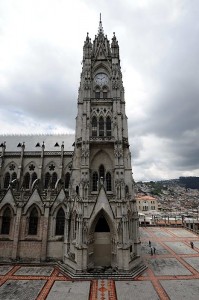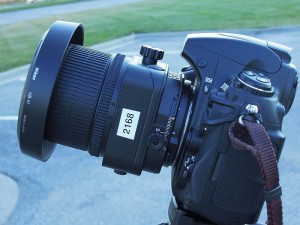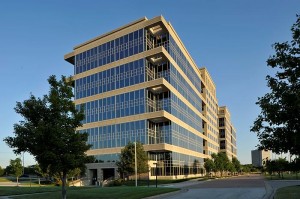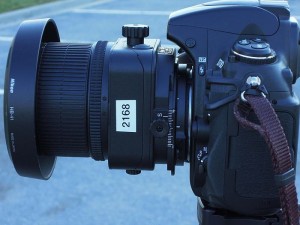PC (Perspective Control) lenses were first developed decades ago to bring tilt/shift functionality to 35mm cameras. View cameras have always been able to do this, but since 35mm cameras didn’t have bellows, they couldn’t. I recently had a chance to spend some time shooting one of the new models, and found it to be a lot of fun.
To understand why you might use a PC lens, you first need to know what they do.There are two keys to PC lenses. The first is that they can tilt and shift. That means you’re able to change the angle of the light striking the sensor. The second is that they throw a larger image circle into the back of the camera than another lens of the same focal length. So what’s the advantage to be able to do this?
Let’s think about how you photograph buildings. If you’re shooting a tall building and standing at the same level as its ground floor, then you’re looking up. And that means you’ll tilt the camera up. Since the sensor is no longer parallel to the building, the resulting photo will look as if the building is falling backwards. To avoid that you need to get the sensor parallel to the building. That means either you need to get up in the air or you need a camera (or lens) that has tilt/shift functionality.
To see this in action, look at the two photos of the cathedral in Quito, Ecuador. In the first (01), I’m at ground level. For the second shot (02), I was able to climb stairs behind me to get higher. Notice how the second shot looks much more natural? That’s because I was able to get higher, so the sensor is closer to being parallel to the church. However, I’m still not high enough, and sometimes you don’t have that option. That’s where PC lenses come in.
Now look at the photos Building01 and Building 02. In this case, both photos were shot from the exact same spot. Notice the change in perspective? In this case that was accomplished using a PC lens, and you can see how I shifted that lens by looking at Lens01 (for Building01) and Lens02 (for Building02). See how the camera’s back in
Lens02 is now parallel to the building? By shifting the lens up, I can do that.
That explains the tilt/shift part (the lens can move horizontally as well as vertically), but why would it need to throw a large image circle into the back of the camera? If it didn’t, then you’d get vignetting at the edges as soon as you started to shift the lens. As it is, if you go to the extremes, you’ll see some vignetting, but it’s not too bad and can usually be corrected in editing. Also, to get the most out of these lenses, you’re best shooting them with a full-frame sensor (Nikon FX cameras, in this case).
Finally, PC lenses have gained popularity not just for perspective control, but as a creative tool as well. By cranking them far off-axis in both directions, you can make wide-angle images that look as though they were shot with impossibly narrow depth of field. These photos resemble close-up shots of miniatures, and some cameras now offer that as an in-camera creative effect. “Baseball” is an example of that.
Technical data: The lens used for these photos (aside from the cathedral) was a Nikkor 24mm f/3.5 PC lens. Nikon was the first to make PC lenses for SLR cameras, in 1961. The examples were shot with Nikon D700 and D3S cameras.








